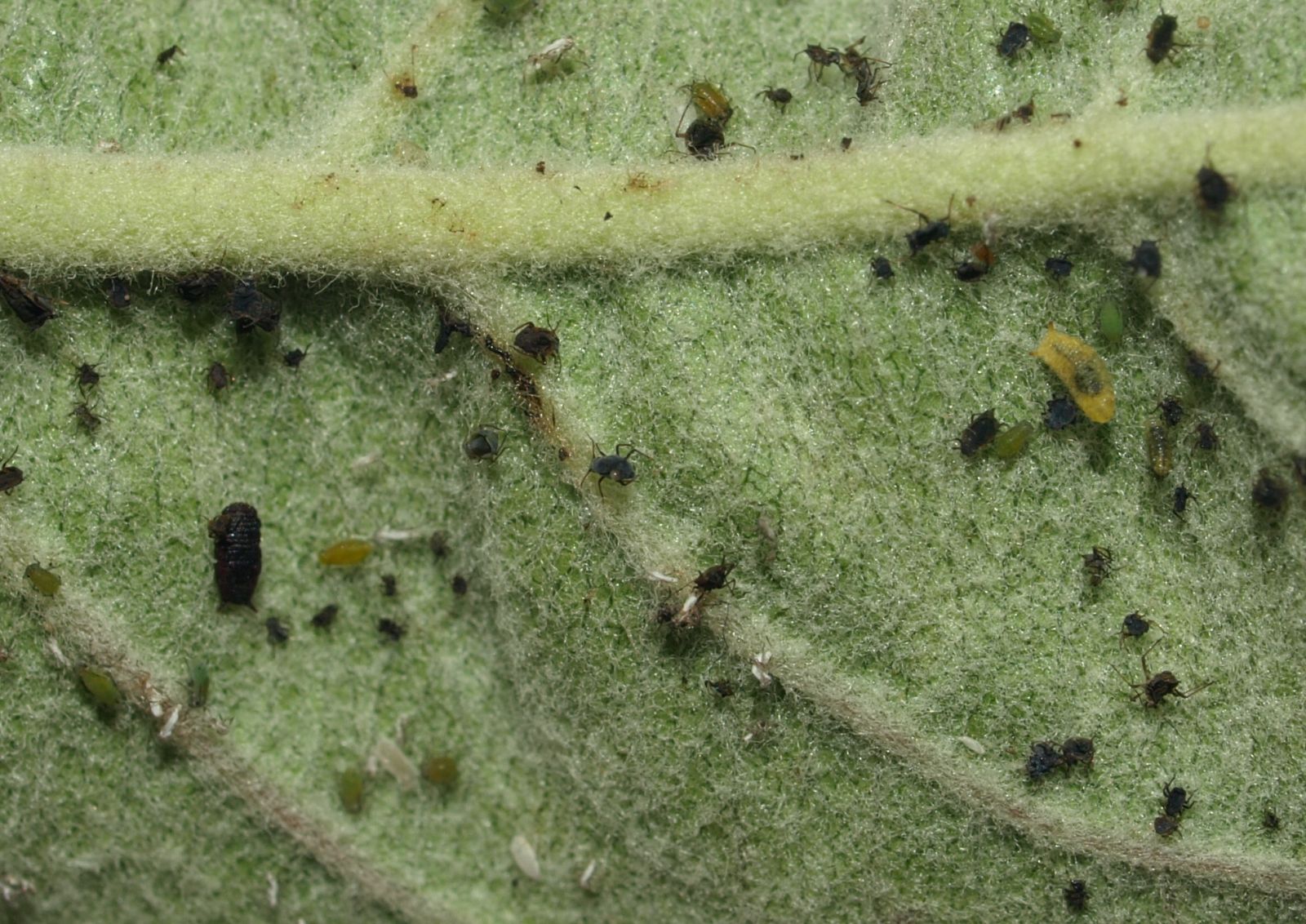Predaceous Midge
General Description
Hosts
Aphids are the most common prey (Fig. 1), however they will also feed on mites, young pear psylla, thrips and scale insects, and on mealybug eggs.
.jpg)
Figure 1. Predaceous midge larvae (orange) feeding on aphids. (BCMA)
Damage
Identification
Egg - Oval, orange, very small.
Larva - Looks like orange maggots with colour varying from bright orange to red, size 2-3 mm long when mature (Fig. 2). Larvae can be confused with apple leaf curling midge larvae.

Figure 2. Predaceous midge pupa (left) and orange larva (right). (H. Philip)
Pupa - Same size as larva but black with a pair of small spikes on rear end.(Fig. 2)
Adult - Mosquito-like, light brown, long dangling legs and long antennae, active at night and rarely seen; body 3mm long.
Life History
Overwinter as pupae in the soil. Adults emerge as weather warms up. Eggs are laid in colonies of aphids. There are several generations per year.
Monitoring
Examine aphid colonies for presence of tiny orange maggot-like larvae or tiny paprika seed-like eggs. Despite their small size, their bright colour makes them easy to spot.
